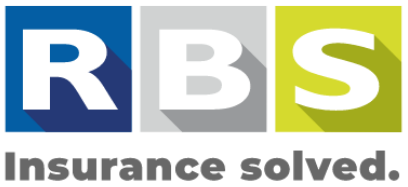Why clients need liability cover for driving
“People are often prone to ‘optimism bias’, which basically means they do not believe that bad things will happen to them. However, it is important to note that motor vehicle claims make up 50% of all insurance claims in South Africa.”
Du Plessis warns that being held responsible for causing a vehicle accident could result in a client being liable for tens of thousands of rands in damages. “Driver liability has the potential to send most uninsured drivers into financial ruin. Even more startling is the fact that drivers can even be found liable for damages resulting from accidents they did not cause.”
The driver behind you is unconscious
“The commonly held belief that a driver who crashes into the back of another vehicle is solely liable for the lead vehicle’s damages, is not entirely true,” says Du Plessis. “There are a number of instances where the negligent driver can be exempted from liability. One of the most interesting examples is when the negligent driver claims to have been unconscious at the time of the accident.”
For a driver to be held liable for his actions, he must have acted voluntarily or negligently, he says. “A driver that is unconscious can’t act voluntarily or negligently, and therefore might not be liable for his conduct.”
Falling asleep at the wheel, fainting or getting a blackout, fit into the definition of unconsciousness. “The responsibility to prove whether the driver really was in such a state, does not rest with the person who caused the accident. Legal precedent dictates that the plaintiff bears the onus to prove a voluntary and negligent act on the part of the defendant.”
But negligent drivers should not think that a defence of “I was sleeping” is a surefire way to escape liability. “Legal precedent where drivers have been found to be not liable for damages as a result of being unconscious does exist, especially if the driver could or should have foreseen that they might experience unconsciousness while driving but drives anyway. But there are also other cases where such drivers have been found to be partially responsible for damages. The interesting thing to note here is that in many of the latter cases, the court ruled that the lead driver shared the liability for the accident.”
According to legal precedent, the driver of the leading vehicle could be held responsible for damages in a rear-end collision. “The leading driver has an obligation to drivers following him by keeping a proper lookout for vehicles behind him. If an accident like a rear-end collision occurs, the leading driver may be required to prove that he made sure the condition of the traffic allowed for his reduction in speed at that moment, that he had selected an opportune time to reduce speed and that he had reduced speed in a reasonable manner that did not unreasonably disturb the flow of traffic behind him.” Again, it can be difficult for the leading driver to definitively prove he was not at least partly responsible.
A driver with right of way can be held liable
“To bust another myth, people who think that a driver with right of way cannot be held liable in the case of negligent actions of other drivers, are very much mistaken,” says Du Plessis.
All road users are expected by law to react reasonably and prudently to avoid colliding with other vehicles. “If a negligent driver fails to stop at a red traffic light, other drivers are obliged to avoid colliding with the negligent driver’s vehicle insofar as is reasonably expected, while keeping their own vehicle under control.”
Losing control of one’s own vehicle while trying to avoid a negligent driver, or simply not reacting quickly enough could mean that one can be held liable.
“If a negligent driver collides with you, and you did not fulfil this obligation the court may decide that you have contributed proportionally to the accident. It follows that you may be liable for that proportion (30% for instance) of the total damages from the accident. If the collision causes a pile-up or any collateral damage, you will share the responsibility with the negligent driver to repay a proportion of those damages,” explains Du Plessis.
Driving a cheap car
One of the reasons that people sometimes use to rationalise why they do not have insurance, is that their cars are not valuable enough to justify the additional costs. “You may end up paying for the negligent driver’s damages simply because his car is nicer than yours.” In the event that the court finds both parties proportionally liable, the owner of the cheapest car often gets the short end of the stick.
“Let’s say that the court finds the negligent driver liable for 70% of your old car’s damages, and you are in turn ordered to pay 30% of the damages to the negligent driver’s new sports car. If your damages equal R50 000, and his damages equal R200 000, it means that you owe the negligent driver R60 000 while he is only expected to pay you R35 000,” says Du Plessis.
“If you subtract the negligent driver’s liability from your own liability, you remain accountable for the difference of R25 000.”
Insurers want their money back
Lastly, the final decision to sue for liability may end up with the other driver’s insurer. “Once an insurer pays out a claim to a client, that insurer has the right to reclaim the costs of the repairs for their client’s damages directly from the liable party. Therefore, just because the other driver’s insurer repaired their client’s vehicle does not mean that you are not liable anymore. The other driver’s insurer may still take you to court to recover the costs of the repairs for their client’s damages, so remind your clients of their risks.
